Navitas Unsweetened Organic Cacao Powder tests positive for unsafe levels of Lead and Cadmium — August 2024 laboratory report
Summary:
When evaluated using the context of the health protective standards (for maximum allowable heavy metal contamination levels) proposed by the medical and scientific community within the Baby Food Safety Act of 2021, this food product should not be considered safe for consumption by children.
Cadmium is a known carcinogen — and has been classified as a carcinogen for more than three decades. The American citizen’s reliance on processed food products to feed their families is particularly alarming (one recent study found that processed foods “now account for more than 60% of daily calories in Americans“) given the pervasiveness of Cadmium contamination in so many U.S-produced, processed, packaged food products (both organic and conventional), as revealed through Lead Safe Mama, LLC’s 2024 laboratory food testing initiative. (Click here to see more of the foods we have tested, and the lab reports for each of those products.)
More than a century ago, Lead was identified and classified as a neurotoxin. More recent science has also clearly demonstrated how Lead accumulates in the body over time. Nearly all of the Lead our body has been exposed to — through ingestion, inhalation, or transdermal absorption — is still in our body.
In spite of what popular culture health “gurus” might have you believe, Lead is not easily released or “detoxed.” Lead bio-mimics Calcium and the body “efficiently” and actively stores Lead in the place of Calcium when Lead is present — in bones, the brain, and other tissue and organs that are reliant on Calcium to function. This means Lead has the potential to impact all biological systems that are reliant on Calcium (from neurocognitive function to joint function to reproductive functions, and more).
- All U.S. federal agencies agree there is no safe level of Lead exposure for humans (and especially children).
- The CDC “reference level” for Lead poisoning (currently a blood Lead level [BLL] of 3.5 micrograms of Lead per deciliter of blood) is misunderstood by most healthcare practitioners to be a level (BLL) below which a child should not be considered poisoned. This is not the case: “The BLRV is simply the level at which a child has more lead in their blood than do most U.S. children (97.5% of children ages 1–5 years).” Read more from the source here.
- In fact, the average BLL of an American child today is in the range of 0.5 micrograms of Lead per deciliter of blood and any BLL of 0.5 or higher is indication there has been a likely significant (or persistent) Lead exposure source for that child, an exposure source that should be identified and removed/ eliminated from the child’s life.
- BLL’s in the range of 2.0 and higher have been long-known to cause life-long health impacts, behavioral disorders, and learning disabilities (read more about that here).
- More recent scientific studies have shown long-term negative health impacts with blood Lead levels in the range of 0.4 micrograms per deciliter. You can read more about one related study here.
- We (Lead Safe Mama, LLC) are seeing in our consulting work with families how food-based Lead exposures (for children living in new construction homes, with no identified or suspected potential environmental sources of exposure) often result in the BLL range of 1.0 to 4.0 (micrograms per deciliter).
The concern for Lead-contamination and Cadmium-contamination in our food supply is even more disturbing in light of the recent (August 2024) study demonstrating an increase in 17 specific types of cancer among younger generations (read more info here).
The scientific community has long shared that the best practice to avoid the potential for life-long impacts from Lead exposure is “primary prevention” (avoiding exposure to Lead in the first place vs. attempting to repair the impacts of exposure after they have happened). It is therefore the recommendation of Lead Safe Mama, LLC that — given the above considerations — families not feed this product (or similarly toxicant-contaminated products) to their children.
There is no excuse for eating foods contaminated with any measurable level of Lead. There is also no excuse for our government agencies to allow these levels of toxicants in foods — especially in foods marketed and sold specifically with the intentions of being consumed by children.
For those curious about concerns for toxicant levels in this product related to serving size (an outdated metric for determining food safety), please read this related article.
For those new to the Lead Safe Mama website:
Tamara Rubin is a multiple-federal-award-winning independent advocate for childhood Lead poisoning prevention and consumer goods safety, and a documentary filmmaker. She is also a mother of Lead-poisoned children (two of her four sons were acutely Lead-poisoned in 2005).
- Tamara owns and runs Lead Safe Mama, LLC — a unique community collaborative woman-owned small business for childhood Lead poisoning prevention and consumer goods safety.
- Since July of 2022, the work of Lead Safe Mama, LLC has been responsible for five product recalls (FDA and CPSC).
- All test results reported on this website are science-based, accurate, and replicable.
- Please check out our press page to see some of the amazing coverage of our work so far this year!
This is an ad-free article.
Advertising and affiliate income help Lead Safe Mama, LLC cover the costs of the work we do here (independent consumer goods testing and childhood Lead poisoning prevention advocacy). We have removed ads from most of our more widely-read articles (and newly published articles, too — like this one!) to make them easier for you to read. In addition to supporting this work by starting any shopping you might be doing with a click on our affiliate links, if you would like to support the independent consumer goods testing and childhood Lead poisoning prevention advocacy work of Lead Safe Mama, LLC by making a contribution (which will also help us keep our more widely-read articles ad-free), click here. Thank you!
Important Background: What is an Action Level?
Please note the following key points:
The original lab report for this product is below (at the bottom of this page).
The graphic above shows the levels of metals detected in this product (in red) along with the low threshold of detection (in green) for each metal not detected with the laboratory testing Lead Safe Mama, LLC completed for this product. The numbers are juxtaposed (in blue) to the “Action Level” proposed by the medical and scientific community in 2021 as part of the Baby Food Safety Act.
- These 2021 levels were proposed as “Action Levels” because they are (in fact) protective of human health.
- An “Action Level” is NOT the same as a “Maximum Allowable Level.”
- Many food manufacturers misinterpret guidance on heavy metals to mean “allowable levels” and consider it reasonable for products to test positive below these levels.
- This is a (perhaps intentional?) misunderstanding/ misinterpretation the food industry makes — a misunderstanding which food manufacturers use to justify the presence of heavy metals in their products.
- There is no safe level of Lead exposure.
- Lead bioaccumulates in the body.
- Lead bio-mimics Calcium in all biological structures.
- If Lead is present, the human body stores it in Calcium-dense biological structures (the brain, bones, organs, teeth, etc.) in place of Calcium.
- Nearly all the Lead you have been exposed to in your life is still stored in your body. You can learn more about this by watching our documentary film on childhood Lead poisoning — linked here.
- It is the cumulative impact of heavy metal exposure (over a lifetime) that makes even small/ incidental/ seemingly trivial exposures particularly damaging and dangerous. You can read more about that here.
- Once a food product has the amount of heavy metal (Lead, Cadmium, Mercury, or Arsenic) noted (above) as the “Action Level,” that food product is officially considered (by the scientific and medical community) unsafe for consumption by children as toxicants (found at-or-above these levels) are in the range of heavy metal levels that have been demonstrated to cause lasting harm.
- Action Levels are unrelated to serving size.
- Action Levels are relevant for any amount of a food product that may be consumed (any quantity of the food in question).
- PPB (parts per billion/ ppb) measurements are a percentage (albeit a very small percentage) and apply to any quantity of the food product tested.
- For more discussion about serving size considerations (and why relying on “serving size” to limit toxicant exposure is not a relevant metric/ not a metric protective of human health), read this article.
- These “Action Levels” proposed in 2021 are the levels at which the scientific and medical community believe the manufacturer (or government) needs to take ACTION to fix the problem.
- One “Action” would be for the manufacturer to take steps toward reducing the levels of toxicants in the food product.
- Another “Action” would be for the manufacturer to cease product sales until the product could be made safe.
- Another “Action” would be for the manufacturer to inform the public that a specific food product has an unsafe level of the metal detected at-or-above the “Action Level” — making a highly-visible public announcement regarding which relevant batches of the product should be recalled and not consumed.
- The Action Levels proposed within the Baby Food Safety Act of 2021 were not arbitrary toxicant levels — they were proposed because they are the levels most protective of human health. The Baby Food Safety Act of 2021, however, was not passed into law.
- Regardless of the fact the Baby Food Safety Act of 2021 never passed into law — and it is therefore legal to have food for children test positive for Lead, Cadmium, Mercury, and Arsenic at-or-above these levels — these Action Levels still reflect the current (modern/ relevant) advice of the medical and scientific communities as levels both achievable by the industry and safeguards of infant and toddler health.
- Food industry lobbyists fought against formalizing these proposed “Action Levels” as a government standard, alleging they were unachievable.
- The image below (with the number ELEVEN) links to a landing page with 11 food products we have already tested this year (2024), all of which have been “non-detect” for toxicants with low thresholds of detection (for Lead, Mercury, Cadmium, and Arsenic) far below the 2021 proposed Action Levels.
- These 11 food products (about 10% of the foods Lead Safe Mama, LLC has tested and reported on so far since March 2024 when we started laboratory testing foods) clearly demonstrate these Action Levels as achievable across a range of food types (flour, coffee, salt, packaged snacks, oats, chia seeds, hemp seeds, beverages, etc).
- The legitimacy of these levels as “Action Levels”/ “Levels of Concern” (even though they were not adopted as law) is further mirrored by the legitimacy of the American Academy of Pediatrics’ level of concern for Lead in water, which is 1 ppb even though the FDA’s official “level of concern” for Lead in water is 15 ppb (you can read more about that here).
For safer snack ideas, click here.
While the packaged, processed food industry would have consumers (and the government) believe the standards proposed in 2021 are unachievable, this industry position (an oft-rearticulated response to nearly every set of laboratory test results for food that we have published to date) is simply not true. It is possible to make safer processed, packaged food products that fall well below the safety levels for toxicants proposed with the Baby Food Safety Act of 2021. To read more about the 11 food items Lead Safe Mama, LLC has tested and reported on so far that tested “non-detect” for Lead, Cadmium, Mercury, and Arsenic (with the limits of detection as reported for each product), click the image below (with the big 11)!
Here also are direct Amazon links to those 11 safer products (this list is growing with the food testing we’re hosting, so to see the updated list at any time, click the graphic with the number above):
- Sea Salt (Oregon, USA)
- Amazon link for this product: https://amzn.to/4dcbk5L
- Article with the lab test report for this product
- Organic Einkorn Flour (Italy)
- Amazon link for this product: https://amzn.to/3LIqxix
- Article with the lab test report for this product
- Organic, Gluten-Free, Sprouted Rolled Oats (Canada)
- Amazon link for this product: https://amzn.to/3WIQ1BN
- Article with the lab test report for this product
- Organic, Non-GMO, Gluten-Free Chia Seeds (Mexico)
- Amazon link for this product: https://amzn.to/3YvE7xC
- Article with the lab test report for this product
- Organic Espresso Roast Ground Coffee (Multi-Country Origin, Non-USA)
- Amazon link for this product: https://amzn.to/3yo1eiL
- Article with the lab test report for this product
- Sparkling Grape-Flavored Tonic
- Amazon link for this product: https://amzn.to/4cjFYZu
- Article with the lab test report for this product
- Pure Organic Layered Fruit Bars in Strawberry Banana Flavor
- Amazon link for this product: https://amzn.to/3WQEekA
- Article with the lab test report for this product
- Pure Organic Layered Fruit Bars in Raspberry Lemonade Flavor
- Amazon link for this product (sold in a box assortment, we haven’t found these sold separately): https://amzn.to/3XcFsIp
- Article with the lab test report for this product
- GoGo Squeez Organic Fruit On The Go in AppleApple Flavor
- Amazon link for this product: https://amzn.to/3XhWYLe
- Article with the lab test report for this product
- Organic Soy Milk
- Amazon link for this product: https://amzn.to/4dwev8l
- Article with lab report to be published shortly
- Organic Hemp Seeds
- Amazon link for this product: https://amzn.to/4e05RP9
- Article with lab report to be published shortly
Published: September 8, 2024
Sunday
Hello! We are working on publishing a LOT of food test results very quickly this week.
We may be updating this section of each article published this week (with more information about the specific product and other similar products for context) in the future (especially as we have aggregate data about more food products in this category to share), but we wanted to make sure the greater Lead Safe Mama community (and the general public) had access to the scientific data provided in these lab reports (about foods and supplements they may have in their home) as quickly as possible.
“I have been feeding this to my child! How can I ‘detox’ them/ what can I do?”
- Please note: Lead Safe Mama, LLC and Tamara Rubin are not healthcare providers/ medical practitioners and do not represent themselves as so. Instead, we share scientific findings from the greater global scientific community and ask that you evaluate those on their merits, discussing any medical decisions with your child’s doctor.
- With the above disclaimer noted, if your child has been eating this product (or any other confirmed or suspected Lead-contaminated foods) and they can tolerate garlic, you may want to increase their garlic consumption.
- Roasted garlic spread on toast
- Garlic on pizza
- Garlic on pasta
- Garlic in green smoothies
- Chopped garlic on veggies
- Most “detox” products and potions on the market simply do not work (they are snake oil products designed to separate desperate parents from their hard-earned cash). Some detox products are also heavily Lead-contaminated and may result in a child being Lead-poisoned.
- Please stay away from these types of detox products (any packaged/ manufactured “detox” product sold by a company).
- Science has repeatedly demonstrated (in multiple scientific studies from around the globe) that simply increasing the consumption of garlic (in any form, cooked or raw) to help with the elimination/ excretion of heavy metals (and specifically Lead) may be significantly beneficial after a known or suspected exposure (read more about that here).
- Blueberries have also been scientifically demonstrated as a helpful “natural detox” (when my children were babies I used to serve them frozen organic blueberries with a little bit of cream [or soy milk] drizzled over the top, which then freezes and turns it into an “ice cream”-like treat)!
- It is also always prudent to ask your doctor about getting a heavy metals panel (blood or urine) for anyone who has been eating contaminated foods — especially if you have not had one recently as a baseline.
Please scroll down to see the full lab report for the product pictured above.
Please do check out the other links on this page (below and above) for additional information about the truly independent, third-party, laboratory testing we are conducting on food products and other ingested items (including supplements and vitamins).
As there are almost no reasonable safety thresholds proposed for toxicants (heavy metals) consumed by adults (in foods and supplements), our focus is (as always) on the health of children.
Some additional reading & links that may be of interest:
- This is our article with guidance for safer food choices in general.
- This is our article with lists of possible safer food choices.
- This is our article with safer snack ideas for children.
- This is the Lead Safe Mama affiliate link to purchase the test kits we used for this laboratory testing.
- Here’s our landing page with links to all the food test results for products we have tested and reported on so far.
- Here’s our landing page listing all the food testing we have in-progress (at the lab/ pending, etc.) — please consider making a contribution in support of any of the pending crowd-funded foods if they are a food you use! Thank you.
- Here’s information on how to send your own food samples into a lab (the cost is $195 per single food sample tested for Lead, Cadmium, Mercury, and Arsenic) and how to collaborate with Lead Safe Mama, LLC on the food testing we are organizing.
Amazon links are affiliate links. If you purchase something after clicking on a Lead Safe Mama, LLC Amazon affiliate link, Lead Safe Mama, LLC may receive a percentage of what you spend — at no extra cost to you.
Lab report for the Unsweetened Organic Navitas brand Cacao Powder, as pictured:
Never Miss an Important Article Again!
Join our Email List


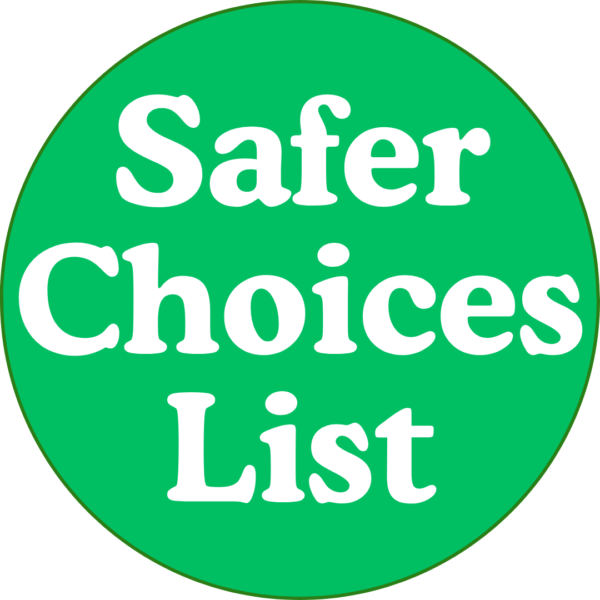
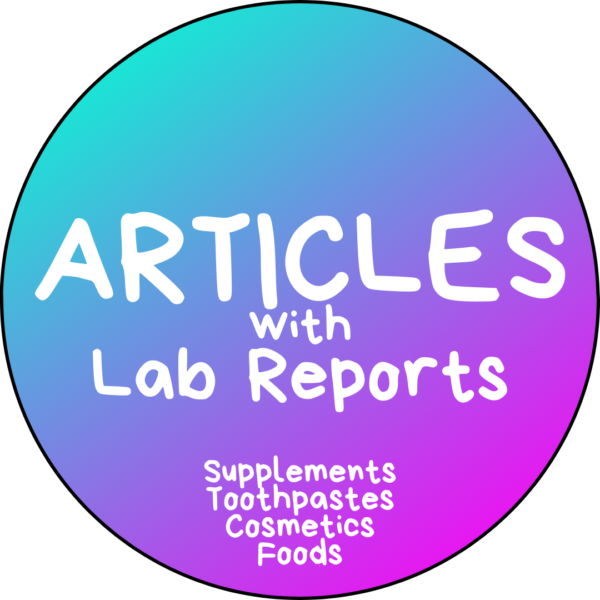
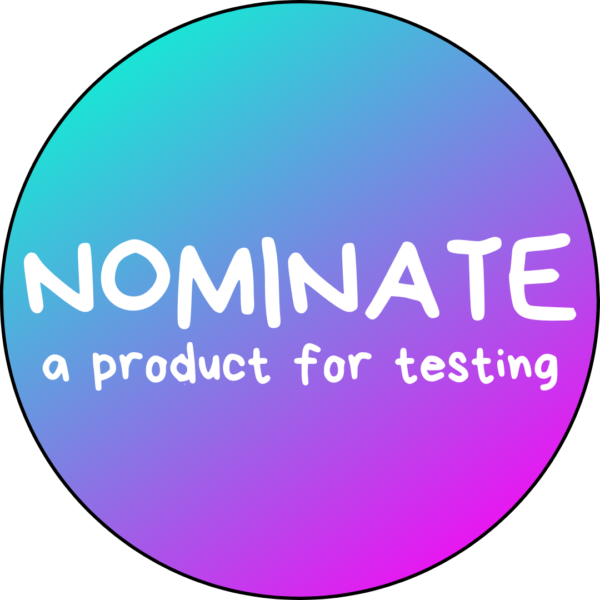



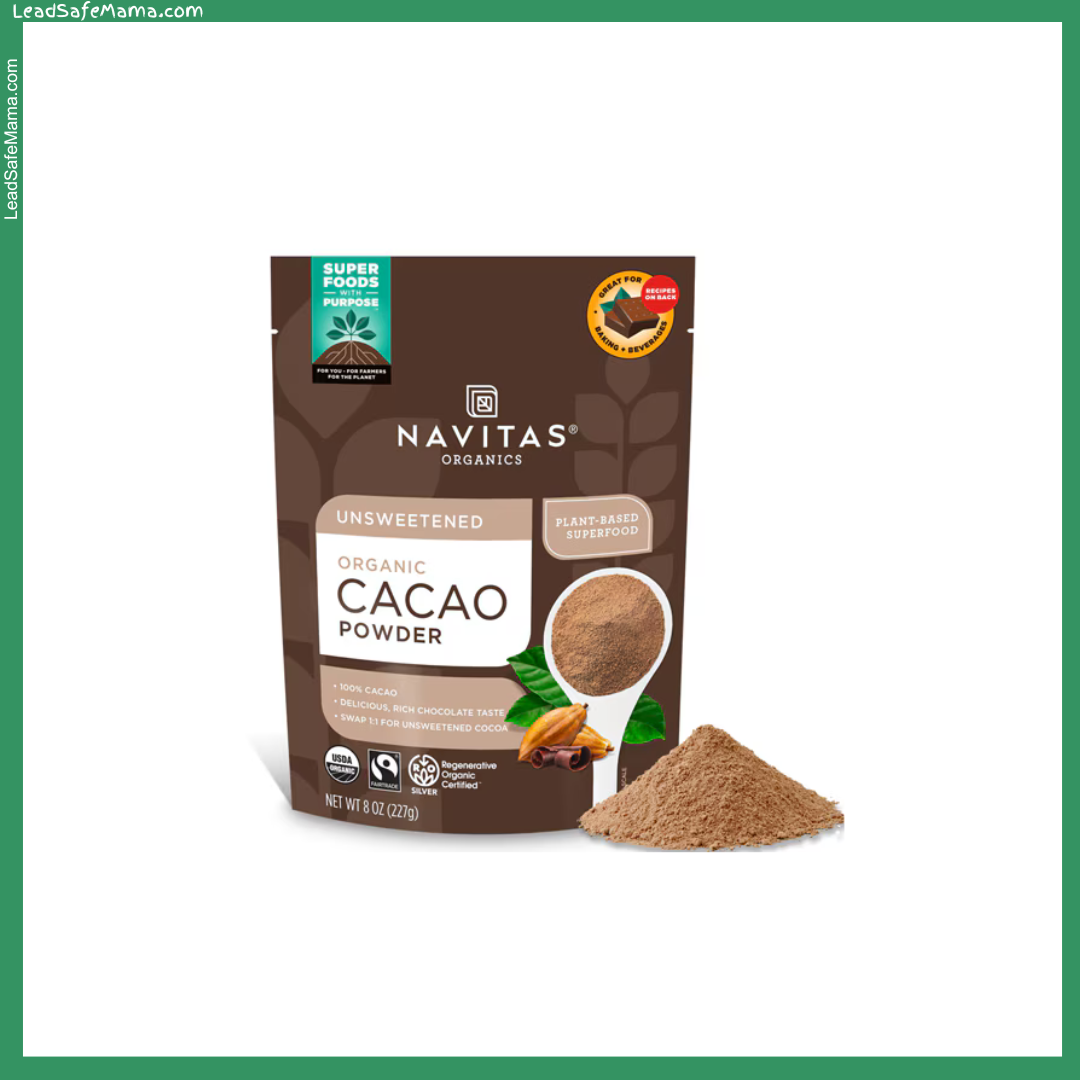
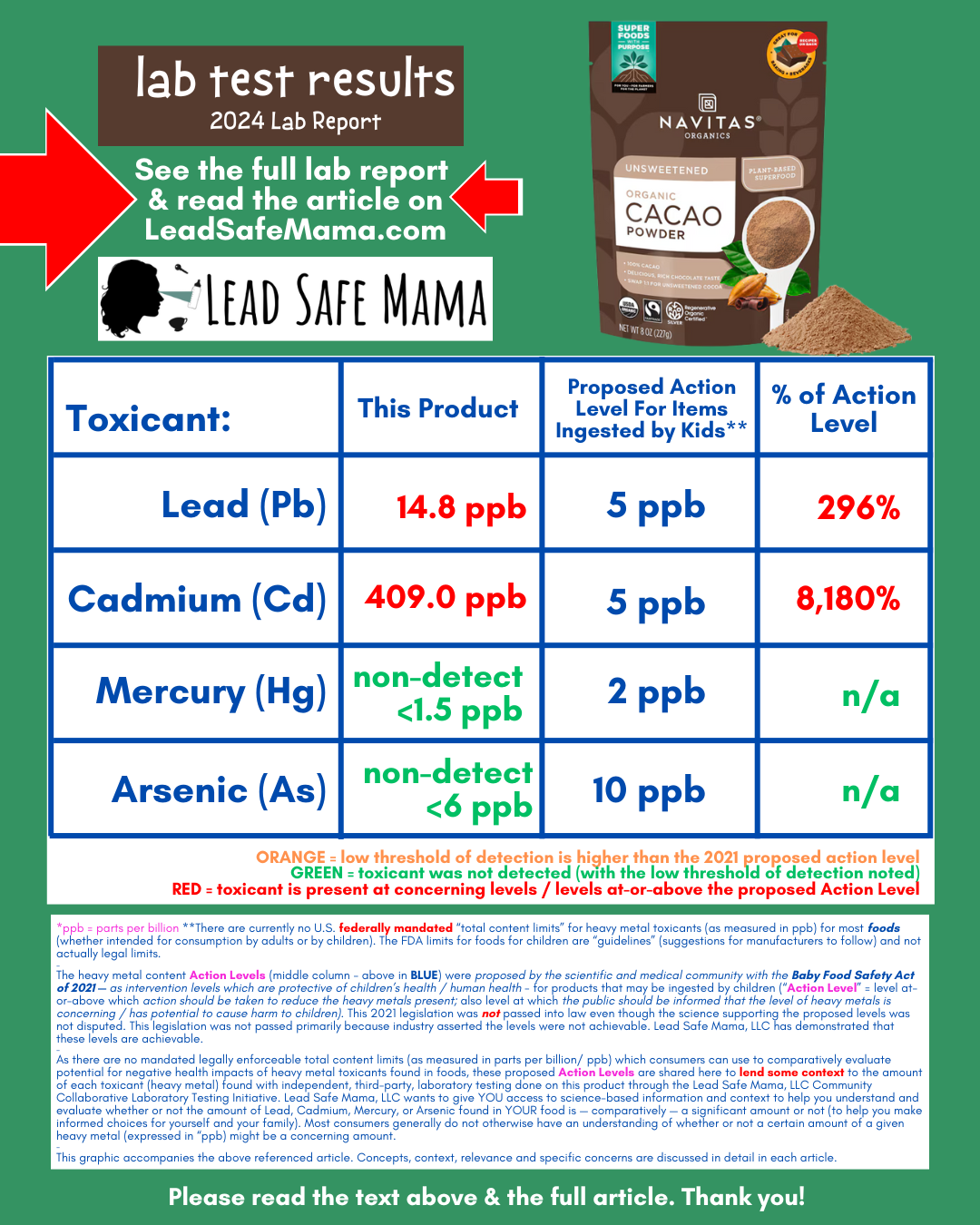
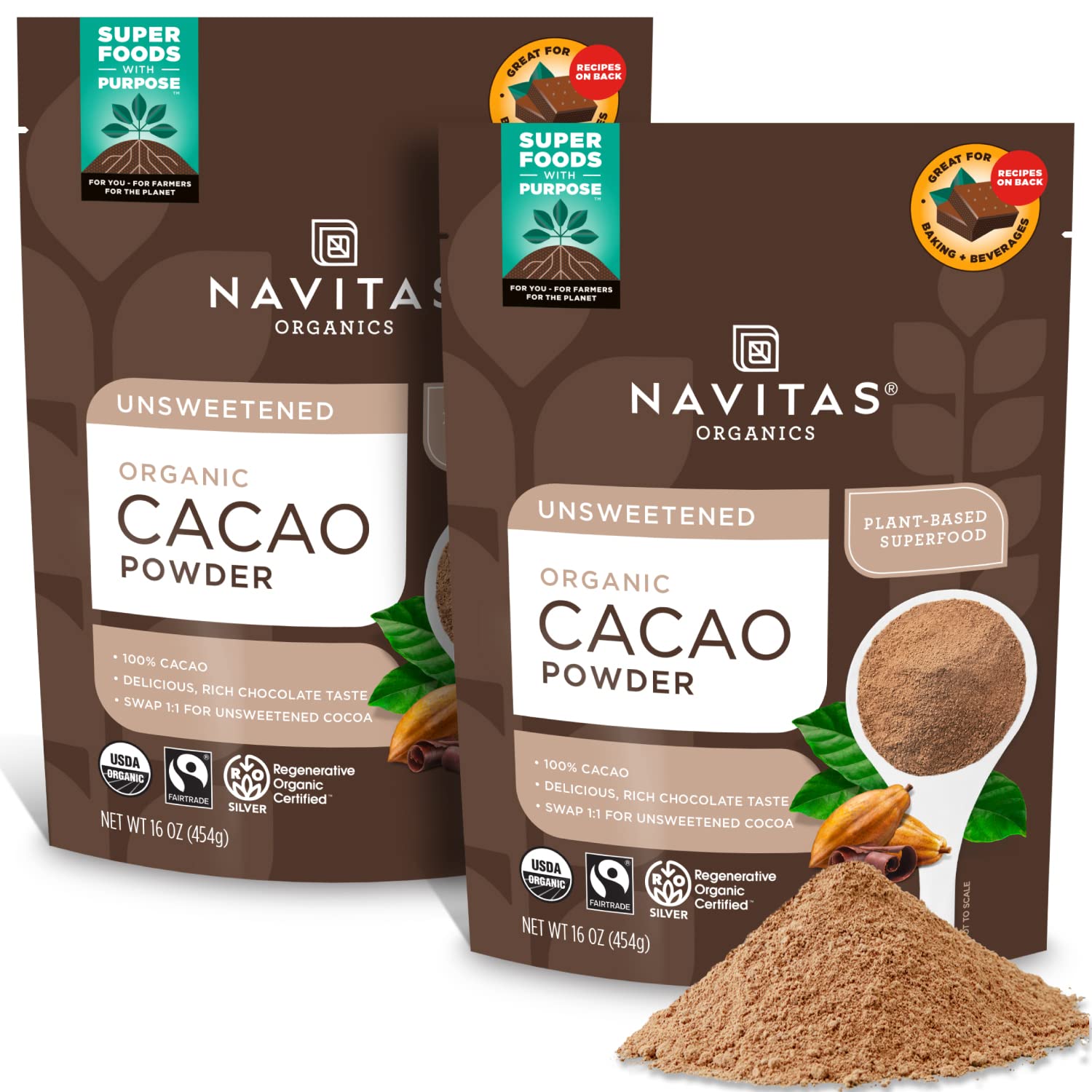
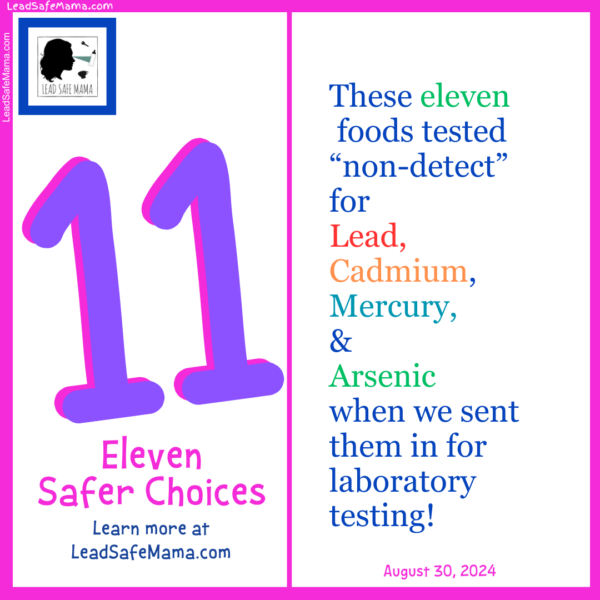
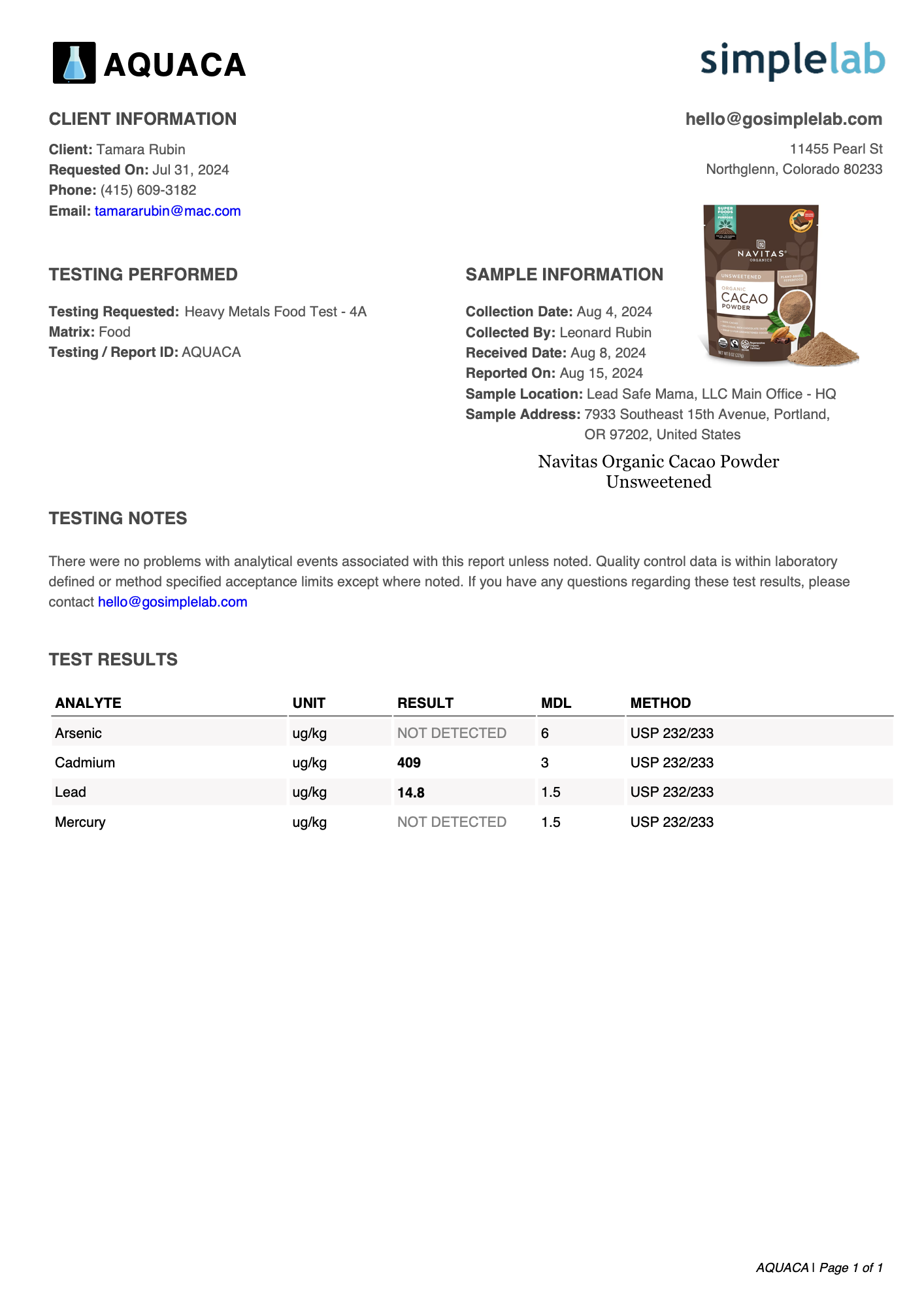

Darn it. We switched to this cacao recently from another organic cacao powder I had been using. Will you be testing Holy Kakow? It is another one we also use. We have vastly decreased our kids’ consumption of any and all chocolate, and I’m working cutting back for myself.
Holy Kakow is also bad unfortunately – results to be published shortly.
I feel sick! Navitas states they test all their products for heavy metals etc right on their website! It’s the reason I buy their cocoa powder :(. Have you sent them your results?
I encourage consumers to communicate directly and share this link.
In my stores in AZ, this packaging has the CA Prop 65 warning on it that it contains lead.
This is frustrating, I use this for baking all the time. How do we find a clean alternative?
Keep testing until we find something better. Consumer Reports said this tested better than others.
Have you looked at Blueprint cocoa? I’m curious if it’s worth the hype– and they claim they’re 3rd party tested.
Not yet – but many people have asked! I will see if we can add it to the next round of campaigns we launch.
t
Hello ! Thank you for this! We use this daily. Do you know if the Blueprint brand has been tested? They claim it’s safe.
Thank you!
ConsumersLab.com tested a whole range of cocoa powder and chocolate. Navitas didn’t fare well with them, either, nor did TJs. It’s a subscription service that tests many products. I feel it’s worthwhile.
I think any source that keeps this type of data behind a paywall is fundamentally unethical.
There goes my morning chocolatey drink and my chocolate milk! I really thought I was doing better by making my own chocolate products from cacao powder. Do you think the results would be similar for all cacao powders or could they all be very different? Also do you think it’s in the actual cacao bean or in the processing methods? Is it one of those foods that tend to leach up more toxins from the soil?
I’m learning with you… but i recommend avoiding cocoa products until we can find a clean source!
Have you compared the CA Prop 65 warning standards to these proposed action levels? I used to think Prop 65 was ridiculous and “on everything,” but your research has really changed my perspective. I hope there is a cleaner source of chocolate because we love the stuff!!!
Prop 65 concerns are based on serving size, which is not at all a useful or practical metric. This is discussed here a bit:
https://tamararubin.com/2024/06/why-are-clean-label-project-purity-award-winning-products-testing-positive-for-lead-cadmium-mercury-arsenic/
T
Thank you for this information. I was preparing to order this brand because the Amazon product page said it is from Sierra Leone, which is supposedly lower in cadmium than South American cacao. Do you have any idea why it would be high if it’s from Africa? Have you tested other cacao brands from Africa? What do they show?
Thanks for commenting! This is Tamara’s son AJ answering questions.
There is still a lot to learn when it comes to how and where cacao products are being contaminated. Environmental and geographical factors are important of course but then there’s also many opportunities for contaminants to be introduced in the processing and transportation of ingredients and products. Lead Safe Mama is hoping to test cacao pods themselves in the near future to have more data on the matter. In the meantime, my mom recommends staying clear from cacao products, though that is easier said than done of course.
Here is a link to my mom’s article on chocolate as well as a link to my mom’s movie in which they discuss the story of chocolate contamination:
https://tamararubin.com/2013/12/lead-in-chocolate-really/
https://www.youtube.com/watch?v=lMbhbwMhs1U
Thanks for commenting! This is Tamara’s son AJ answering questions.
There is still a lot to learn when it comes to how and where cacao products are being contaminated. Environmental and geographical factors are important of course but then there’s also many opportunities for contaminants to be introduced in the processing and transportation of ingredients and products. Lead Safe Mama is hoping to test cacao pods themselves in the near future to have more data on the matter. In the meantime, my mom recommends staying clear from cacao products, though that is easier said than done of course.
Here is a link to my mom’s article on chocolate as well as a link to my mom’s movie in which they discuss the story of chocolate contamination:
https://tamararubin.com/2013/12/lead-in-chocolate-really/
Film Link: https://www.youtube.com/watch?v=lMbhbwMhs1U
Thanks for your reply, AJ. The Navistas website says their beans are sourced from the Dominican Republic in the Caribbean and Sierra Leone in West Africa. Per their website, they could not source enough beans from Sierra Leone, so they also started buying them from The DR. However, the Amazon web page still says their cacao beans are single-origin from Sierra Leone. Beans from W. Africa are supposedly lower in cadmium, so it is misleading for them to continue to say single-origin from Sierra Leone. I contacted Navitas a few days ago, and they said they would update the web page on Amazon soon. The fact that some of their beans are now coming from the Dominican Republic may explain why the cadmium is higher in the sample you tested than the levels reported to be in beans from W. Africa. I could not find cocoa powder from W. Africa, except from a couple of African companies that I had never heard of and would not trust, so I’m not buying more cocoa until a safer brand can be identified.
Hey, on the website for Navitas they said in early 2024 they moved their Cacao beans source from Sierra Leone to the Dominican Republic which is why the levels have shot up.
WOW!! So disappointed. I’ve been using Navitas Unsweetened Organic Cacao Powder for many years to make “healthy” almond flour pancakes. Looks like they are not so healthy after all!! Costco carries it. Who knows, maybe the kirkland almond flour isn’t healthy either. It would be a good product to test since many people are looking for a grain flour substitute.
I made so many hot coco for my boy with this…. I’m chucking then all out now….
I have not yet found a good replacement.
Oh this makes me so sad. I too thought it was a better option. Can you tell me the serving size /amount used in this test for these numbers? Hoping it makes me feel a little better if I wasn’t using so much, especially since I was giving to my little boy thinking a safe hot chocolate option.
These numbers are a percentage. They apply to any serving size.
So I’m guessing this will require a Prop. 65 notice?
Is anything safe anymore.
Navitas website states their current average cadmium content in our Cacao Powder is 0.4mcg/g. For lead, it’s 0.01mcg/g.
The test results from AQUACA are 409 micrograms/kilogram (.409 micrograms/gram) for Cadmium and 14.8 micrograms/kilogram for lead (.0148 micrograms/gram). The 2021 proposed action level is 5 ppb (.005 micrograms/gram) and Prop 65 is 4.1 micrograms/day for cadmium and 0.5 micrograms/day for lead.
So a 6 gram serving size of Navitas cacao powder has 2.4 grams of cadmium and 0.0888 grams of lead in it?
I’m responding to SG: maybe my math is off but according to what you posted:
So a 6 gram serving size of Navitas cacao powder has 2.5 MICROgrams of cadmium(NOT 2.4 GRAMS as you posted). …. and 0.0888 MICROgrams of lead in it (not 0.8 GRAMS)
.409 micrograms x 6 = 2.454 micrograms
Quoting your comment here: “(.409 micrograms/gram) for Cadmium and 14.8 micrograms/kilogram for lead (.0148 micrograms/gram). The 2021 proposed action level is 5 ppb (.005 micrograms/gram) and Prop 65 is 4.1 micrograms/day for cadmium and 0.5 micrograms/day for lead.”
This is very upsetting! I did my research and the website also claimed that they have done their 3rd party testing result. This is totally unethical for them to advertise as low in those harmful metal and lead. My husband is on Keto and rely this product to curb the chocolate craving. Thank you so much for doing this. Do you have an app that we can check? I have been using the Yuka app to scan products. It will be very helpful if you have developed an app. I will search and see whether you have an app for the result and research that you have done. Thanks again!
Stanb by for more
Can’t wait
Are there any brands that sell safe cocoa powder, free from high levels of heavy metals and safe for children? I am in Vietnam.
We have not yet found any. Stay tuned! We will keep looking!
T
I reached out my supplier, Z Natural Foods Organic Cacoa Powder, Extra Rich, their numbers are pretty similar.
Question: You say these amounts are in breach of the baby legislation, but does that mean it is unsafe for adults too?
There’s no safe level of exposure for lead at any age. Even if it was 4 ppb lead – under the proposed legislation it would have been legal, but there’s evidence it would have still been detrimental.
Exactly!
I purchased the cocoa nibs, super berry blend and açaí from this company. Last week when I made a smoothie with the Coco nibs and I think the açaí, within two hours, I was throwing up for an entire hour and then was pretty much in bed until the next day. My husband had severe stomach cramps about a day and a half later with headaches, and he also was in bed all day and through the night. I thought it was a short-lived virus/stomach bug. But last night I made yogurt with the cocoa nibs and the super berry blend. Within the same amount of time I was throwing up. Not sure if you throw up from lead or if this is salmonella. I did see where they had a recall on one product containing salmonella.
that’s horrible! Definitely was the nibs. I just tried some Navitas organic pure chocolate with no sugar, the discs including the cocoa butter and feel really dizzy and slightly nauseous and decided to google it. Just opened them and they don’t expire until 2027, yet they had a slightly off flavor unlike the previous package. It’s horrible how lead is showing up in our organic and “safe” whole ingredients.
Tamara,
Recently my husband and I consumed Navitas organic Superberry and Açaí powder in our smoothies. Two hours later, I was throwing up for an hour and was out of it for the rest of the day. Two days later, my husband was having severe cramping. We thought it might be a virus, but then exactly a week later, we put it in our yogurt and the exact thing happened. I connected the dots when I was throwing up 2 hours after consuming. My husband reacted much worse the second time with level 10 pain. The company claims that it has had no other complaints about these products and wants me to send them to them for them to test. Do you think they will be honest? Are you able to test them if I send them to you? And if so, how much of the product would you need for testing?
Email me about testing: TamaraRubin@mac.com
Could you add Terrasoul Superfoods Organic Carob Powder or another carob powder to your list it can be a substitute for cocoa powder
I’m sad, I gave this to my son, what should I do now? What brand do you recommend? Thank you.
I just tried some Navitas organic pure chocolate with no sugar, the discs including the cocoa butter and feel really dizzy and slightly nauseous and decided to google it. Just opened them and they don’t expire until 2027, yet they had a slightly off flavor unlike the previous package. It’s horrible how lead is showing up in our organic and “safe” whole ingredients
I did some research and I don’t really think there is any chocolate that tests low. mountainroseherbs tests the lowest of any I have found, but honestly Navitas is second lowest. We should keep that in mind and not over consume, maybe also to push companies to adopt better practices. But I feel what is missed here is that Navitas is relatively clean if people still insist on consuming cacao. That is valuable information.
Hi Tamara – I know this article is a year old, but have you looked into/tested “Ora cacao?” They have a page on their site about their independent lab testing for lead and cadmium (https://ceremonial-cacao.com/pages/heavy-metals-results), with links to their independent lab testing. I would love to know what you think about all of this?
Hi, Liz!
I’ve been looking into Ora Cacao as well and it does seem to be a very clean, fully tested brand. I haven’t bought it yet but I do need a healthy and clean Cacao. I bake with it and like to make ceremonial Cacao so I’m really hoping it’s a clean brand.
I don’t expect it will be. I haven’t heard of it before.
Here are all the products we have tested and published reports on so far. This is a good page to bookmark and check back on periodically for updates.
https://tamararubin.com/lab-reports/
Dear Tara and Leah,
I am so confused by your different conclusions about the “best” and “worst” cacao powders.
Lead Safe Mama concludes that “Navitas Unsweetened Organic Cacao Powder tests positive for unsafe levels of Lead and Cadmium — August 2024 laboratory report “: https://tamararubin.com/2024/09/navitas-unsweetened-organic-cacao-powder-tests-positive-for-unsafe-levels-of-lead-and-cadmium-august-2024-laboratory-test-report-here/
While Mamavation rates it as one of the Best Cocoa Powders tested: https://mamavation.com/food/chocolate-lead-cadmium.html
Is this because “best’ and “worst” are simply relative terms, or have I missed that you’ve tested different products, or something else? I understand that chocolate is problematic because due to heavy metal content, but categorizing a product so differently is very confusing to me and probably others. I rely on both of your findings and suggestions when I shop.
I would love to hear from you. Thanks very much for your work.
It is sadly discouraging when something you’ve been consuming for years and is so rich in healthy flavonoids and other good things turns out to be contaminated with unhealthy levels of heavy metals, while all along you thought you were doing something good for your overall health. Truly discouraging. I have consumed Navitas Organic Cacao powder almost daily for years. My head is spinning.
For me – I just question where the flavonoid argument is coming from, who is paying to support that science? to support that narrative? How much of that is real and how much of that is greenwashing to support chocolate sales. I haven’t done that deep dive – but I think it is worth investigating.
T
Hey Tamara thank you for your work, have you been able to find a clean cacao powder brand? We’ve been waiting! Best regards
No. There isn’t one. I will shout it from the rooftops if we find one – but they are all contaminated.
I have been using Terrasoul Cacao Powder (and many other products) for years because its website emphasizes the company’s transparency and third-party testing. This is from its “About” page: “Since the beginning, we’ve been challenging (aka “setting fire to”) the status quo. So when word got out that we decided to start openly sharing lab results with current and potential customers, we ruffled a few competitor feathers to say the least. But as you have probably figured out by now—doing the right thing is what we do. We independently test every ingredient we sell for a variety of contaminants for both safety and quality. And we will happily share our results with you.” Please Tamara comment and review it if you haven’t already. Thanks very much for all of your research and publications. Nancy
Thank you for your research & truth. I recently tried Crio Bru and just got a bag of Nativas to try. I like all the ways that cacao could be beneficial to me, a disabled Elder. However, after reading this information about Nativas I found this 2021 lawsuit against Crio Bru : https://oag.ca.gov/system/files/prop65/notices/2021-02681.pdf
Welp, I guess I’ll return the Nativas to the store and go back to drinking homegrown herbal teas.
It appears that we humans will become hunter gatherers again in our search for non-toxic, non polluted foods.
Yes! Return to hunter gatherer – I like that movement!
T